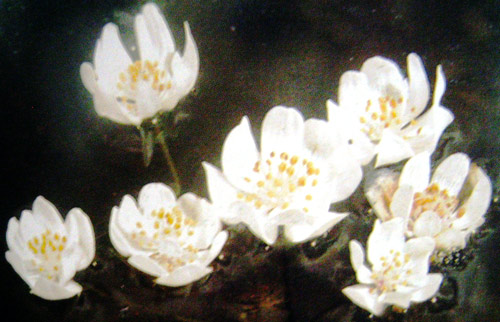Kherere (Sotho); Inguduza (Zulu); Blouslangkop (Afrikaans); Blue-squill / Blue Scilla of Africa (English)
Description:
Hyacinthaceae – family
Scilla natalensis is a graceful perennial bulb. The leaves are broad and sharply tapering, narrowing at its apex and grey-green in colour. The flower growths are borne on long slender stalks of about one meter high and bright blue colour. In general, it produces a large bulb, 10 to 15 cm in diameter, covered with firm, hardened, papery brown or purplish tunics (bulb scales). It is deciduous, growing during summer and dormant in the winter.
Plant use:
Scilla Natalensis (Photo: bulbsociety.org)For ornamental gardening it can be used to great a semi-natural rock garden. It provides a long period incentive to garden lovers as it starts with short leaves at the base of the stem and later when it has finished flowering its leaves grows to maximum sizes and lasts until the start of winter coldness.
This is an easy plant in cultivation and is ideally suited to the rockery but will do equally well in a container. It can also be used to good effect planted in clumps or drifts in the mixed border. Each individual flower is not long-lasting, but there are so many of them opening in succession that the inflorescence will last for up to a month in the garden.
Traditional issues:
Warning for medicinal plant use: This plant should be treated with extreme caution, as taking any part of it internally is potentially fatal. Do not try self-treatment; it’s always advisable to consult with a qualified practitioner.
The bulb is used medicinally in South Africa and is one of the most popularly traded muthi (meaning traditional medicine and pronounced moo-tea) items in KwaZulu-Natal. Used externally as ointments for wound-healing, to treat sprains, fractures, boils and sores and to draw abscesses. The ash from a burnt plant, and the bulb in powdered form is rubbed into cuts and scratches, and over sprains and fractures.
The plant appears to have significant analgesic and antimicrobial activity, and phytochemical studies have found that it contains compounds known to possess anti-inflammatory and antimutagenic properties which would support its use for the treatment of strains, sprains and cancers.
It is also an ingredient in a medicinal preparation for cattle suffering from lung sickness.
Conservation status:
It’s Red Data conservation status has recently been upgraded from Insufficiently Known to Vulnerable, due to its being a very popular item in the KwaZulu-Natal muthi trade. Intensive harvesting is causing a decline in wild populations over an ever-increasing area of its distribution range. The Muthi Garden Project in Pietermaritzburg is one novel way in which plants and humans can learn to co-exist.
Distribution and habitat:
Scilla natalensis occurs on the east of southern Africa, throughout the Eastern Cape, Lesotho, KwaZulu-Natal, Free State, Swaziland and into Mpumalanga where it is found growing in a variety of habitats from sunny slopes, rocky hills, cliffs and ledges, to damp cliff faces, near waterfalls, in moist depressions, on the edges of streams and vleis (wetlands) to coastal areas, in groups or as solitary specimens.






No Comments